
Stephan Magsig Shadows at 53 Greene St, oil on linen, 60 x 42 inches 2007 click here for a larger view
I have been following Stephen Magsig’s realist cityscape paintings for several years and was very pleased that agreed to an email interview and want to thank him for spending the time to share his thoughts with us.
I was first introduced to Stephen Magsig’s work during the beginnings of the “painting a day” phenomenon a few years ago. Stephen has a separate blog that he devotes to showing his small paintings that you can view here. Stephen, like Duane Keiser, is one of the most accomplished and successful pioneers of the “painting a day” phenomenon which started a few years ago. Stephen Magsig has an amazing output of his smaller daily paintings online while also showing larger work in a prestigious brick and mortar gallery, the George Billis Gallery in NYC and LA and the David Klein Gallery in Birmingham, MI. He has shown work nationally and is in prominent private, corporate and museum collections. Stephen was featured in Art and Antiques Magazine 2001 issue and has had articles about him in American Art Collector, and American Arts Quarterly. Another interview with him can be seen on the “Real Art World” blog
Most of Magsig’s work is based on photographs but there is often a feeling for the light and color that goes well beyond just rendering a photo into paint. In particular, I’m drawn to his masterful NYC storefronts and the architectural details from Detroit that engage the viewer with the play of the geometry of the big shapes and color notes that emphasis his underlying abstract composition.
Larry Groff: Can you tell us a bit about your background, what lead you to become a painter?
Stephen Magsig: I have always enjoyed drawing even as a child, I was in 3rd grade when I realized the joy of making artwork. I did a chalk mural on the blackboard and it made me aware that I had a special gift. I have been doing some kind of art ever since. As a painter I came to the career from a different angle than most . After serving in Vietnam I returned to school studying technical and commercial art. Next step was design and then illustration. All the while also working as a fine art painter. Finally taking the plunge to only doing fine art. I was very inspired by the great illustrators like Harvey Dunn and NC Wyeth
(another video about Stephen Magsig of an opening at the David Klein Gallery is posted at the end of this article)
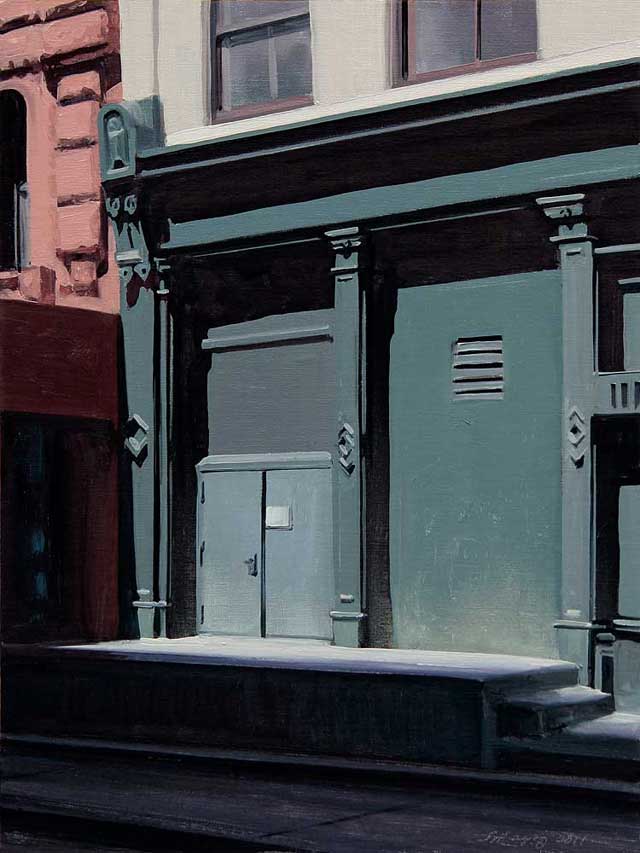
Franklin St Shadows 12 x 9 inches
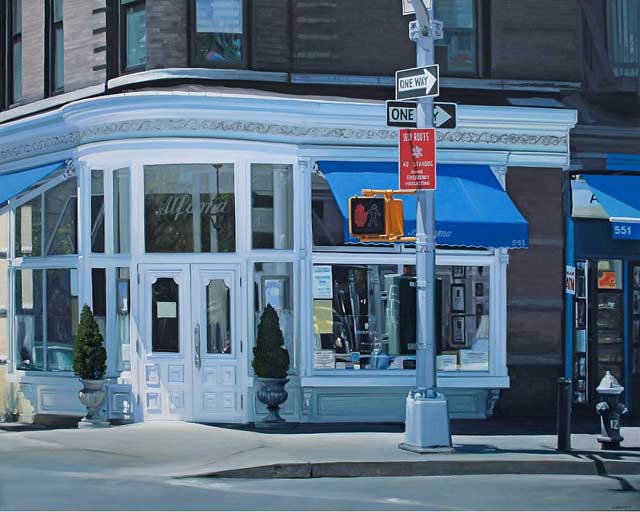
Hudson and Perry, oil on linen, 48 x 60 inches 2011
LG: Your work seems to share affinities with urban scene painters like Edward Hopper and perhaps precisionist painters such as Charles Sheeler, Charles Demuth and Ralston Crawford. What art and artists have been most influential to you.
SM: I have always looked at and learned from Hopper, Fairfield Porter, Bonnard, Matisse, Whistler, Diebenkorn, Sheeler, Demuth, Crawford, Eric Fischl, Robert Ryman, Edwin Dickenson, Rackstraw Downes, and Bob Thompson among others. But I also really like looking at the Abstract Expressionists like DeKooning and Kline. I like almost all good artwork and am inspired by it.
LG: In many of your paintings you seem to working from photographic sources. but you don’t appear to just copy the photos and have a more naturalistic color, space and light than what you often see with photorealism. Do you paint from life as well? Please tell us something about how you go about your process with your larger more complex paintings.
SM: I like the idea of documenting Detroit and I do work from photos of existing or once existing sites.
I work from my own photographs that are shot as subjects for paintings. I have been taking photos of Detroit since the early 80″s. I start composing in the viewfinder. I have painted en Plein Aire and enjoy it very much. Right now it is to time consuming for me.
Like many artists today I use the computer screen for reference. I like using the screen as it has so much information, I can enlarge the image for more detail, lighten the shadows to see what is there. I find it gives me more information to use as I want. I use the screen as if I was looking at the scene to simplify and adjust to my liking. I work in the Alla Prima method. To start a painting I pick the image I like and crop it in proportion to the panel or canvas. I print a color copy and rule a grid onto it. From this I do my drawing with paint onto the gridded canvas. This helps with the proportions and verticals as I have an astigmatism, and everything would lean to the left without vertical guide lines to help me. On larger works I will also underpaint the masses while drawing. I work from dark to light. The small painting are done in one setting, I like painting wet into wet. I can control the edges more that way. On the larger works I try to finish certain color sections in one setting just like the smaller works, so I can control the paint without having to overpaint. I like to mix a large range of colors, warm and cool in the values I am working in. This allows me to put more color into an area without having to mix. I can also intermix this palette and the colors stay harmonious. I also have more freedom to use warm and cool colors within a certain value to give an area more life or color perspective. Finishing the painting by making any color or perspective changes and adding the final highlights. I really am a realist painter and not a photorealist, even though I work from photographs. The photos are a reference point and I use them to fit how I feel at the time I pick the image and use it that way.
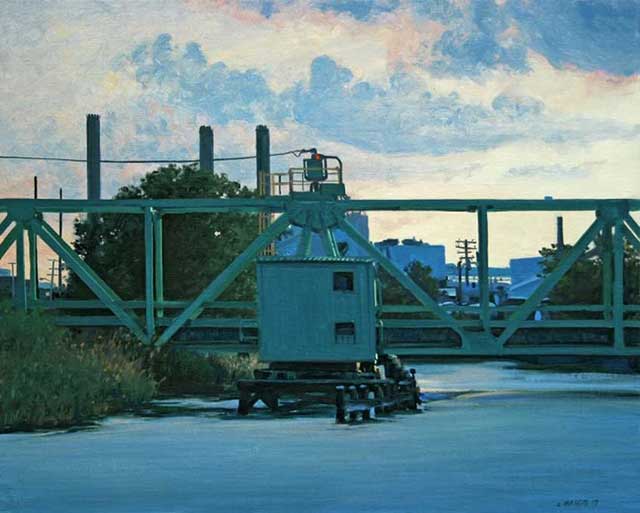
Swing Bridge, 16 x 20 inches, oil on linen panel 2010
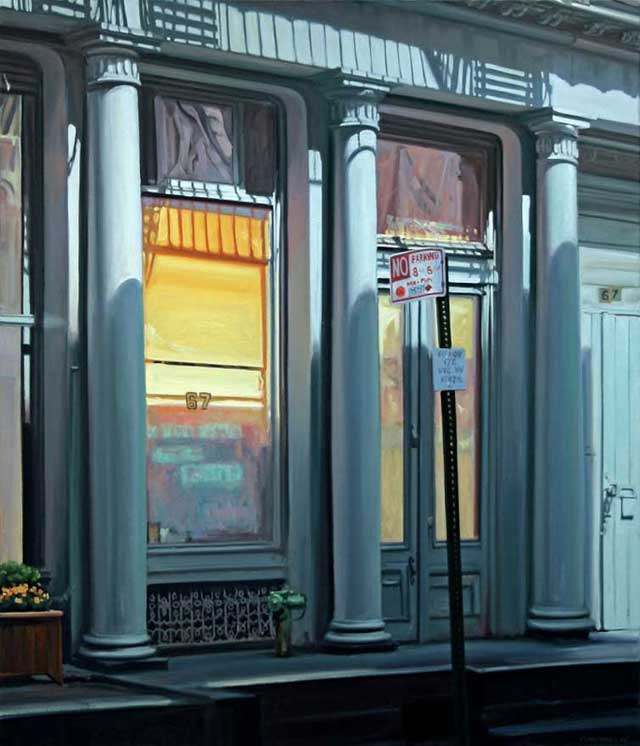
67 Greene St, 42 x 36 inches, Oil on linen 2009
Detroit Stories Fort St II 2011
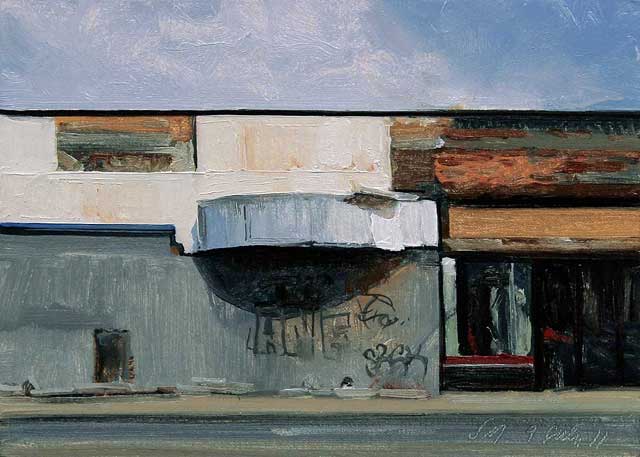
Detroit Stories Fort StII 2011
LG: You show at the George Billis Gallery, a distinguished Chelsea and LA gallery often showing the work of leading cityscape painters. However, you also sell many small alla prima paintings from your website and Ebay. I read where you made over 1300 small paintings since 2007. Many people must be thrilled to purchase such wonderful Detroit and urban themed paintings so affordably. I can imagine that even unemployed auto workers and normally non-art buying individuals of modest means can enjoy having one of your paintings hanging on their walls. I’m curious how this works out for you and your thoughts on making art affordable to the “masses” and not just and selling to prominent art collectors.
SM: One of the main reasons I started the smaller daily paintings was to reach an audience that had been priced out of the larger gallery paintings. It has connected me with artists and collectors from all over the World. I really enjoy doing the smaller daily paintings. I get more satisfaction from them and I try to keep the same quality level as the larger pieces. It still takes a commitment to purchase a painting even the small ones, people buy them because they really want them rather than just being able to afford them. I have had major collectors buying the small paintings and have had collectors introduced to my work from the small paintings buying larger works from my galleries. So it has worked both ways. I don’t think the galleries were very happy about the small paintings at first but it has taken the financial pressure off from them and me. The small works also are used as studies for the larger paintings. I also feel I have learned a lot about value, composition and simplifying with the small works and it has improved the larger work.
LG: There has been much written in the news about the current “renaissance of the arts in Detroit becoming a place many artists are moving to for the very affordable housing and growing artist community. Are there many of these newer artists painting the Detroit cityscape? Would Detroit be a good place to move for a perceptual painter?
SM: It is an incredible time to be an artist in Detroit. There is such a strong supportive art scene. There are artists moving into Detroit from all over the World and there are opportunities that did not exist before. The Kresge Foundation gives 12 fellowships of $25,000 to artists and one eminent artist fellow of $50,000 a year. There are all kinds of new venues such as pop up galleries, new galleries, new museums etc. We have some of the best schools and grad schools in the country. There is a very strong body of young artists making all kinds of artwork in Detroit from street art to conceptual installations.
Burks Igloo

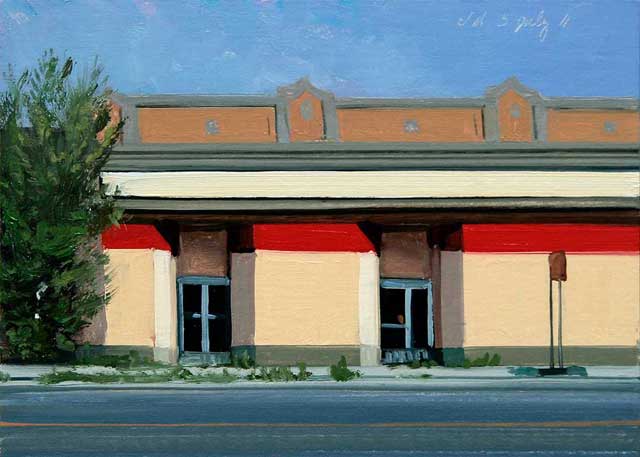

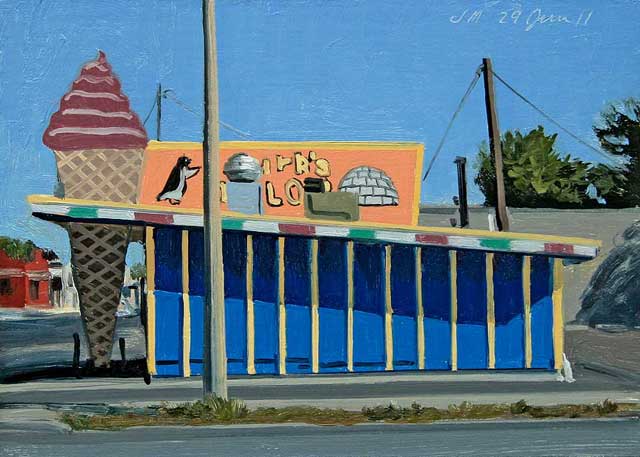
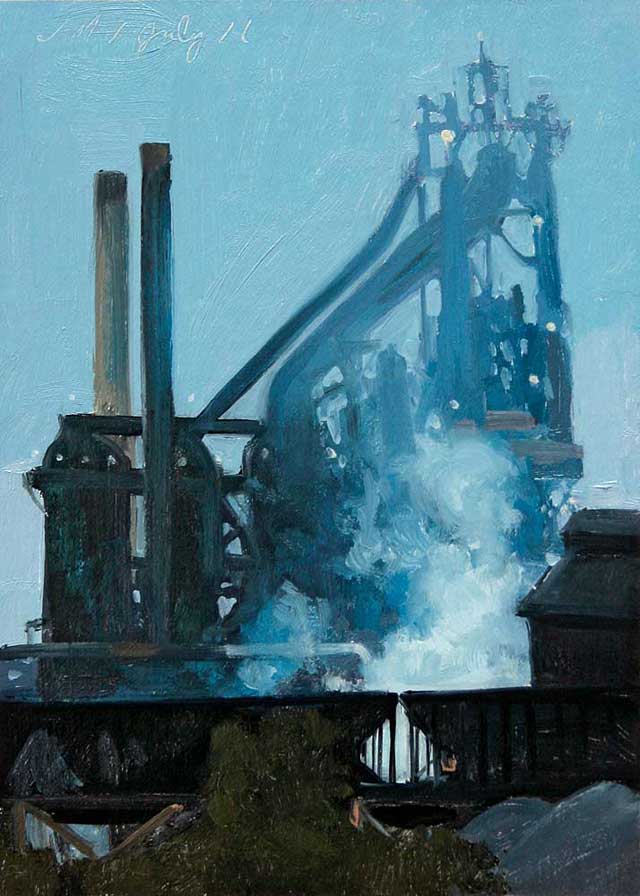
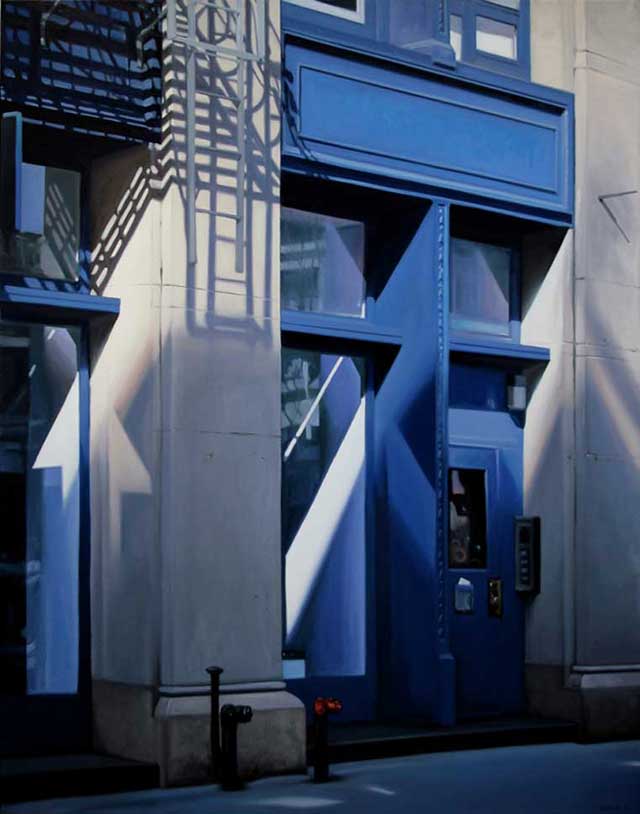
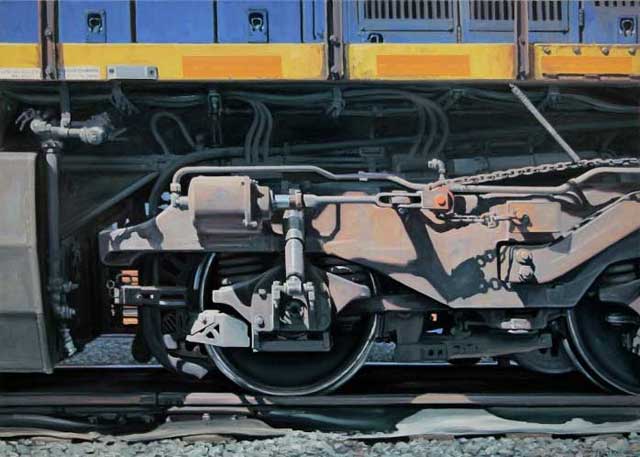
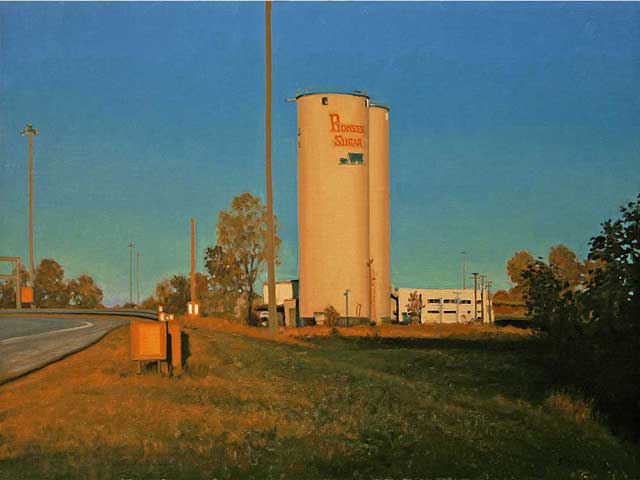




an excellent post about one brilliant artist. thank you
Thanks for sharing this interview Larry. I was not familiar with Mr. Magsig’s work, but feel a certain kinship with it and his process. Thanks again for all of your work here. Very helpful.
I love this work…most especially the “one-a-day” paintings!
Thanks, Larry, for continually providing great interviews with interesting artists. Your site is one of the best things going.
Thanks for the kind words Marianna, Jon and Rahina. Stephen Magsig’s brillance and artistry is admirable enough but I also really respect that his pricing enables mere humans, like me, to afford to buy his smaller works. I’m trying to decide which one to add to my very small but growing collection.
Thank you for the interview of Stephen. I have been following his work since my days of teaching art in Dearborn and Detroit. It is always intersting to recognize an old store front, sign, bridge or other scene from The “D.” Detroit has so many gems of buildings that have fallen on hard times and turned to ruins. I live in New Mexico now but am glad to hear good things about the art in and around Detroit.
Hi Larry,
I wanted to thank you for an excellent website; I always look forward to new postings. Your latest posting on Stephen Magsig was very enjoyable, I’ve watched his work for well over 10 years locally, and I’m happy to see him get recognition nationally through his workmanlike attitude (and talent!).
Another local Detroit artist of great merit and too little recognition you might like to know about is Robert Wilbert. His work and life are not unlike those of Wilbur Niewald and Lennart Anderson. Robert is in his 80’s now, and retired from 40 plus years of teaching at Wayne State (Ellen Phelan was a student among many others). His internet presence is virtually non-existent, but Wayne University Press recently published a very nice monograph. A November show at the Susanne Hilberry gallery is planned.
Finally, I also admire the work of Fairfield Porter and thought you might like to know about the Archive of American Art resource (if you don’t already). Many papers and sketchbooks online, even his will, Tibor records and a look into his process (Porter Paints a Picture)…..http://www.aaa.si.edu/collections/container/viewer/Articles-about-Porter–313120
Hi Scott, Sorry to be so long in replying to your generous comment, been very busy lately with not enough time to devote to keeping up this blog. I should have more free time shortly. I have seen the Fairfield Porter resources at the Archive of American Art – terrific resource and they have many, many other great materials on other important artists as well. I haven’t heard of Robert Wilbert before and I will check him out – sounds interesting. Thanks again for your comment.
I just finished reading a really good book titled DEEP POSTMODERNISM by Jerry Gill where he described a constructive form of postmodernism based on phenomenology, what he eventually calls “linguistic phenomenology.” The reason why I am mentioning it here is that one of the major components of his theory is an emphasis on the process of forming community-based, as opposed to global, contexts for critical dialogue based on simple language. Mr. Magsig’s work is a great example of a simple visual language based on community-level context; his work is deeply postmodern according to Mr. Gill’s thesis.
I love this work!
Noel
Another terrific interview. Thank you -this blog is brilliant!
Thanks for the interesting interview with Stephen Magsig, which introduced me to his work. I particularly like the range of imagery explored in the small paintings and bought one as a result seeing his work on this website.
He is such a masterful colorist…thanx for this article.
thany you veruy much
Love your stuff Magsis eespecially your smaller work. I’ve been trying emulate every work. Subject matter and technique are striking. Love your stuff and going to keep an eye out for easy coast shoes. My wallet only allows me the ppssibility yo check out your smaller work. Sometimes the subjects tree works…uglier the better!!!
Stephen,
I swear I didn’t drink a twelve-pack of Buds before I posted my latest comments. Whoa.
Really enjoy your work. You capture things, buildings, trees w simplicity but you really grasp the essence of that particular thing. A sort of poetry. Not everything is placed on canvas…just the essential. If I can paint like you in twenty years I will die a happy man. Best of luck to you and your family.
I love these paintings they seem so raw, not flowery pretty scenes but the raw truth. Very wonderful